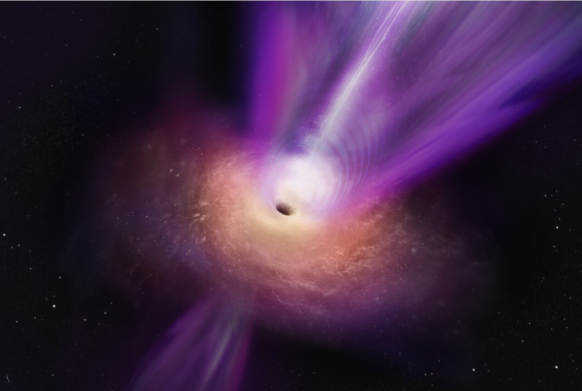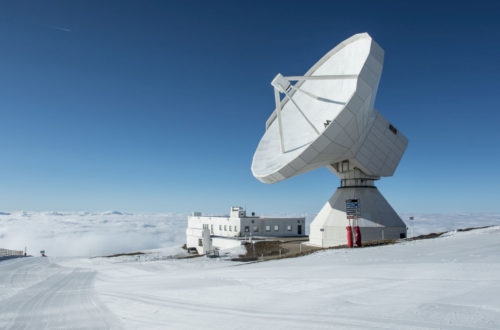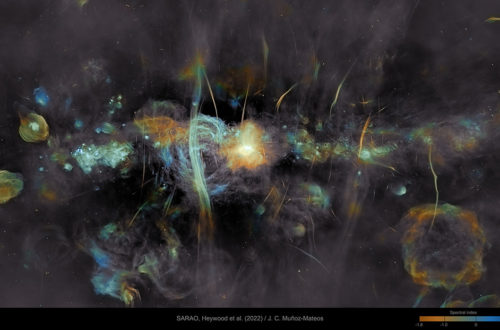Black holes are some of the most fascinating objects in the universe, known for their immense gravity and mysterious nature. While they are famously known for their ability to swallow everything in their vicinity, including light, black holes can also emit powerful beams of energy called jets.
Jets are narrow beams of plasma that shoot out from the proximity of black holes at relativistic speeds, meaning they are close to the speed of light. This week, Nature published a new observation of the supermassive black hole at the center of the M87 galaxy that captured the first image of the jet and the black hole shadow together. See the science release by ESO.

Jets are powered by the immense gravitational and magnetic forces that exist near black holes. Jets are highly collimated, meaning they maintain their narrow beam-like shape even as they travel vast distances. The exact mechanisms that drive their formation and evolution are an active area of research in astrophysics. For example, General Relativistic Magnetohydrodynamics (GRMHD) simulations have provided important insights into their nature.
In GRMHD simulations, jets are often defined as a region of high-velocity, high-magnetization, low-density plasma that is emitted from the vicinity of a black hole. However, there are various definitions of jets and unbound outflows in the literature, see for example Appendix A of this EHT paper.
GRMHD simulations are incredibly useful, but they do have limitations. One of the biggest problems is to trust the numerical results within the jet funnel. In order to generate accurate radio images from these simulations, we often have to excise, or remove, the “red” regions that are located inside the black line seen in the previous video. Apparently, the recent paper published in Nature has taken emission from the jet funnel region into consideration in their theoretical analysis!
By comparing simulations with observations from real astrophysical jets, we can test theoretical models and gain insights into the physical properties of black holes and their surrounding environments. But, why do we care about jets? As it turns out, they play a crucial role in shaping the evolution of galaxies. The energy released by the jet can heat up and drive gas out of the galaxy, affecting the rate of star formation and regulating the growth of the supermassive black hole at the center of a galaxy.




